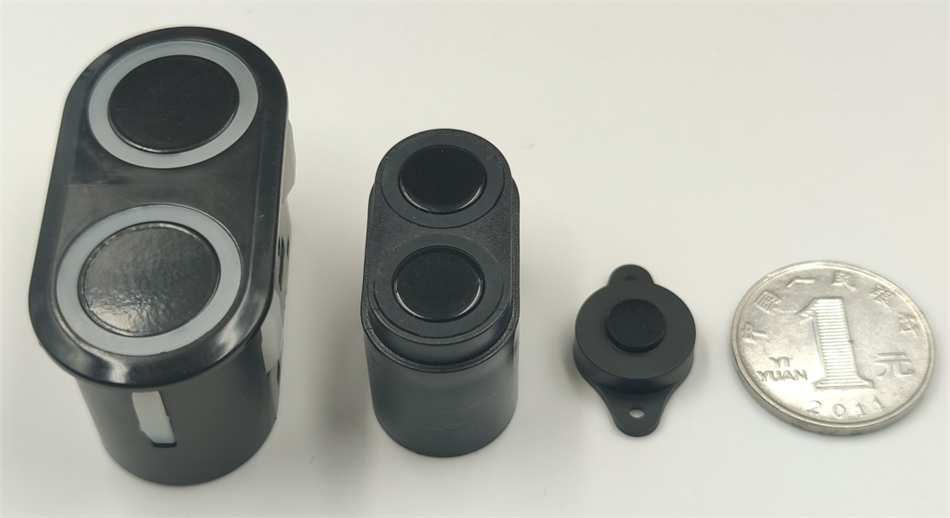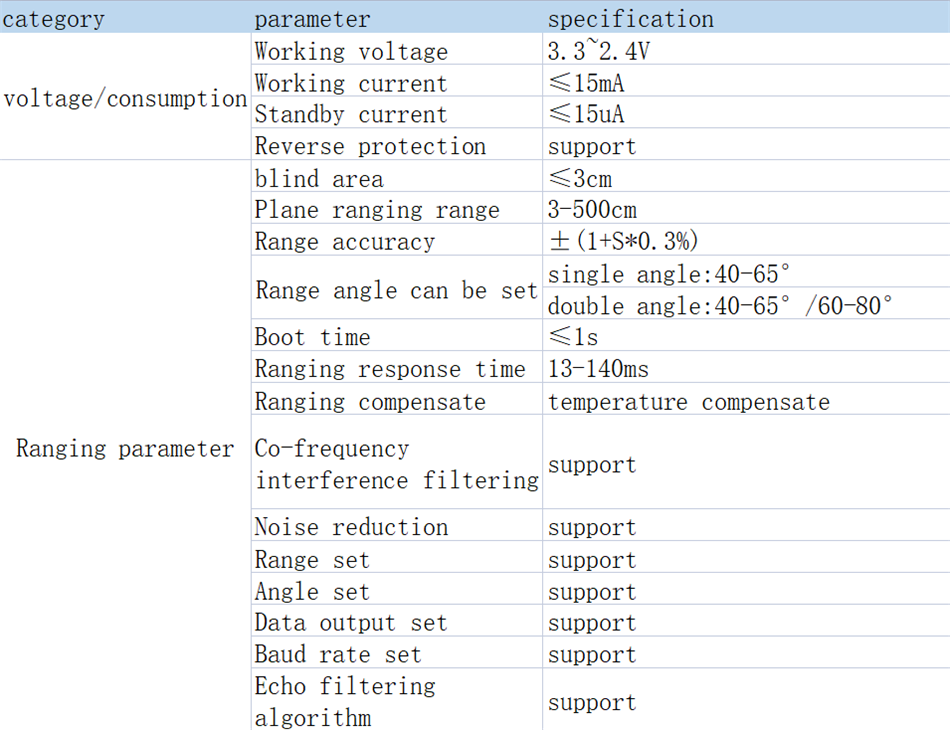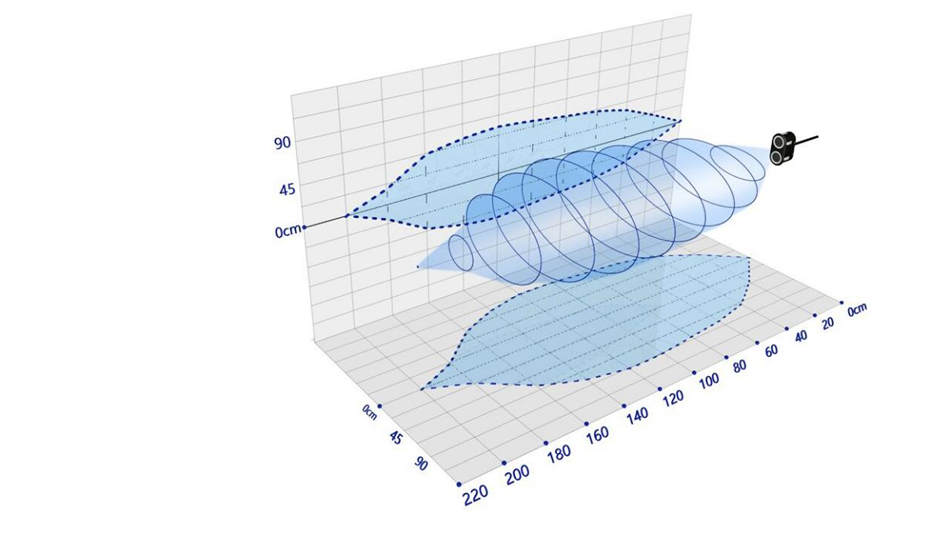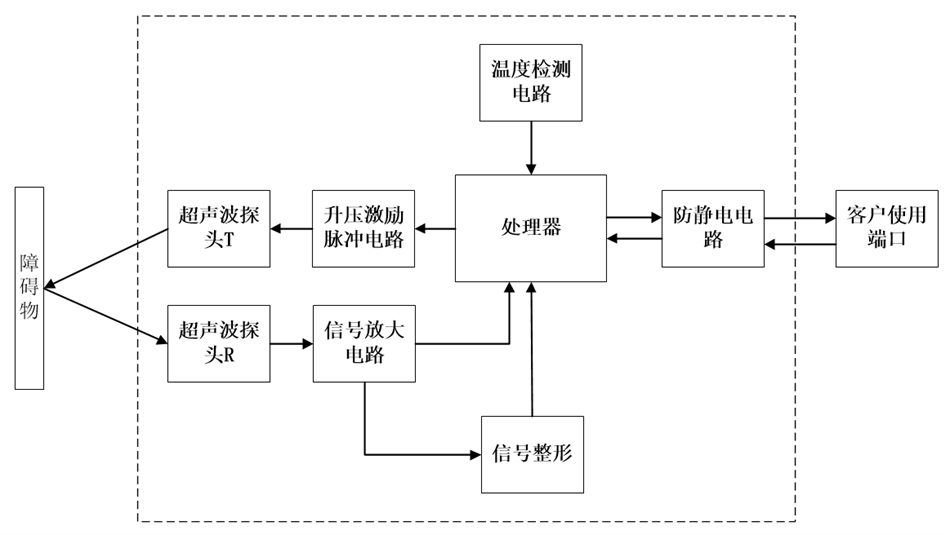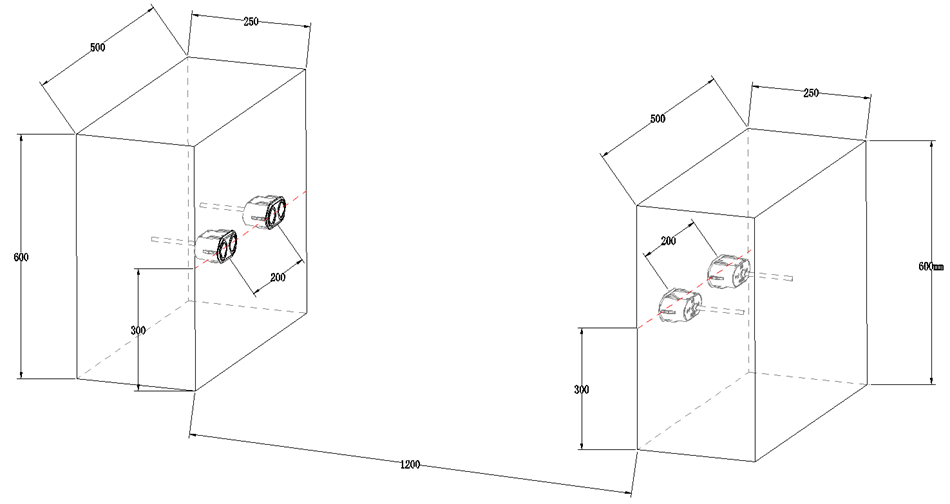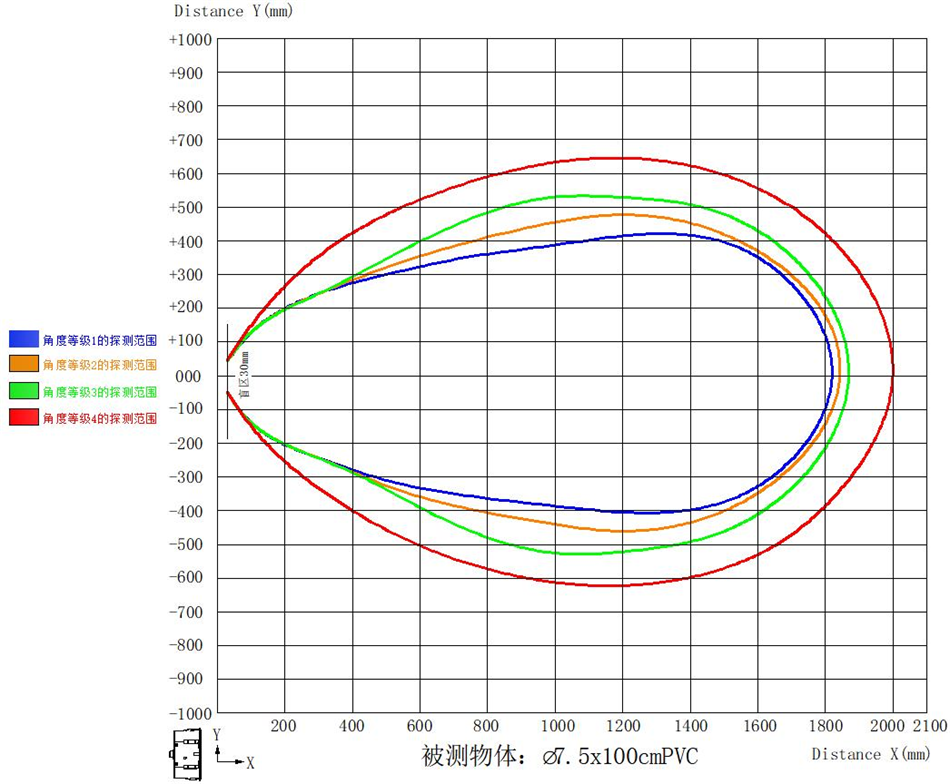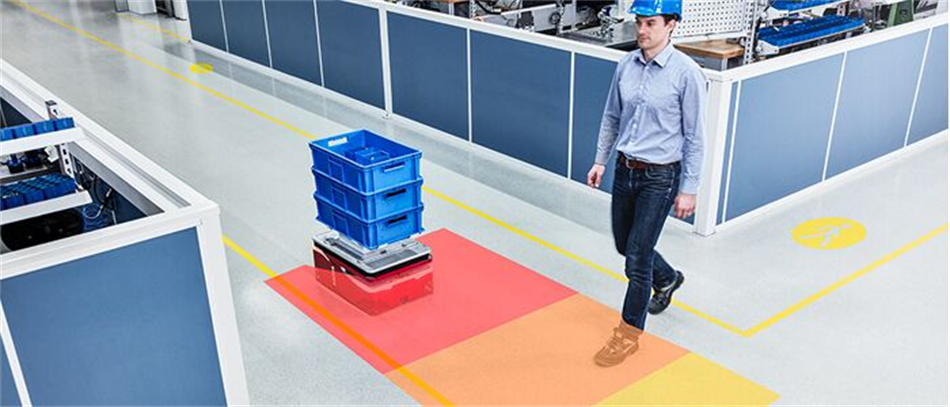1、Introduction
Ultrasonic ranging is a non-contact detection technique that uses ultrasonic waves emitted from the sound source, and the ultrasonic wave reflects back to the sound source when the obstacle is detected, and the distance of the obstacle is calculated based on the propagation speed of the speed of sound in the air. Because of its good ultrasonic directivity, it is not affected by the light and the color of the measured object, so it is widely used in robot obstacle avoidance. The sensor can sense the static or dynamic obstacles on the walking route of the robot, and report the distance and direction information of the obstacles in real time. The robot can correctly perform the next action according to the information.
With the rapid development of robot application technology, robots in different application fields have appeared in market, and new requirements are put forward for sensors. How to adapt to the application of robots in different fields is a problem for every sensor engineer to think about and explore.
In this paper, through the application of ultrasonic sensor in robot, to better understand the use of obstacle avoidance sensor.
2、Sensor Introduction
A21, A22 and R01 are sensors designed based on automatic robot control applications, with a series of advantages of small blind area, strong measurement adaptability, short response time, filter filtering interference, high installation adaptability, dustproof and waterproof, long life and high reliability,etc. They can adapt sensors with different parameters according to different robots.
A21, A22, R01 product pictures
Function abstract:
•wide voltage supply ,working voltage3.3~24V;
•blind area can up to 2.5cm minimum;
•The farthest range can be set, a total 5-level range of 50cm to 500cm can be set through instructions;
•A variety of output modes are available,UART auto / controlled, PWM controlled, switch volume TTL level(3.3V), RS485,IIC,etc. (UART controlled and PWM controlled power consumption can support ultra-low sleep power consumption≤5uA);
•The default baud rate is 115,200, Supports modification;
• Ms-level response time, data output time can up to 13ms fastest;
•Single and double angle can be selected, a total of four angle levels are supported for different application scenarios;
•Built-in noise reduction function which can support the 5-grade noise reduction level setting;
•Intelligent acoustic wave processing technology, built-in intelligent algorithm to filters interference sound waves, can identify the interference sound waves and automatically perform filtering;
•Waterproof structure design, waterproof grade IP67;
•Strong installation adaptability, installation method is simple, stable and reliable;
•Support remote firmware upgrade;
3、Product parameters
(1)Basic parameters
(2)Detection range
Ultrasonic obstacle avoidance sensor has a two-angle version of the choice, When the product is installed vertically, the horizontal left and right direction detection angle is large, can increase the coverage range of obstacle avoidance, small vertical direction detection angle, at the same time, it avoids the wrong trigger caused by uneven road surface during driving.
Diagram of the measurement range
4、Ultrasonic obstacle avoidance sensor technical scheme
(1)Diagram of the hardware structure
(2)Workflow
a、The sensor is powered by the electrical circuits.
b、The processor starts self-inspection to ensure that each circuit works normally.
c、The processor self-check to identify whether there is an ultrasonic same-frequency interference signal in the environment, and then filter and process the alien sound waves in time. When the correct distance value cannot be given to the user, give the abnormal sign data to prevent errors, and then jump to the process k.
d、The processor sends instructions to the boost excitation pulse circuit to control the excitation intensity according to angle and range.
e、The ultrasonic probe T transmits acoustic signals after working
f、The ultrasonic probe R receives acoustic signals after working
g、The weak acoustic signal is amplified by the signal amplifier circuit and returned to the processor.
h、The amplified signal is returned to the processor after shaping, and the built-in intelligent algorithm filters the interference sound wave technology, which can effectively screen out the true target.
i、Temperature detection circuit, detect the external environment temperature feedback to the processor
j、The processor identifies the return time of the echo and compensates the temperature combined with the external ambient environment, calculates the distance value (S = V *t/2).
k、The processor transmits the calculated data signal to the client through the connection line and returns to a.
(3)Interference process
Ultrasound in the field of robotics, will face a variety of interference sources, such as power supply noise, drop, surge, transient, etc. Radiation interference of the robot internal control circuit and the motor. Ultrasound works with air as the medium. When a robot is fitted with multiple ultrasonic sensors and multiple robots work adjacent at the same time, there will be many non-native ultrasonic signals in the same space and time, and the mutual interference between robots will be very serious.
In view of these interference problems, the sensor built-in a very flexible adaptation technology, can support 5 level noise reduction level setting, the same frequency interference filter can be set, range and angle can be set, using the echo filter algorithm, has a strong anti-interference ability.
After the DYP laboratory through the following test method: use 4 ultrasonic obstacle avoidance sensors to hedge the measurement, simulate the multi-machine working environment, record the data, the data accuracy rate reached more than 98%.
Diagram of the anti-interference technology test
(4) Beam angle adjustable
The software configuration sensor beam angle has 4 levels: 40,45,55,65, to meet the application requirements of different scenarios.
5、Ultrasonic obstacle avoidance sensor technical scheme
In the field of robot obstacle avoidance application, the sensor is the robot’s eye, Whether the robot can move flexibly and quickly depends largely on the measurement information returned by the sensor. In the same type of ultrasonic obstacle avoidance sensors ,it is a reliable obstacle avoidance products with low cost and low speed, products are installed around the robot, communication with the robot control center, start different ranging sensors for distance detection according to the motion direction of the robot, achieve fast response and on-demand detection requirements. Meanwhile, the ultrasonic sensor has a large FOV field angle to help the machine obtain more measurement space to cover the required detection area directly in front of it.
6、Highlights of the application of ultrasonic sensor in robot obstacle avoidance scheme
• Ultrasonic obstacle avoidance radar FOV is similar to the depth camera, cost about 20% of the depth camera;
• Full-range millimeter-level precision resolution, better than the depth camera;
• Test results are not affected by the external environment color and light intensity, the transparent material obstacles can be stably detected, such as glass, transparent plastic, etc.;
• Free from dust, sludge, fog, acid and alkali environment interference, high reliability, worry-saving, low maintenance rate;
• Small size to meet the robot external and embedded design, can be applied to a variety of scenarios of service robots, to meet the diverse needs of customers, reduce costs.
Post time: Aug-16-2022

